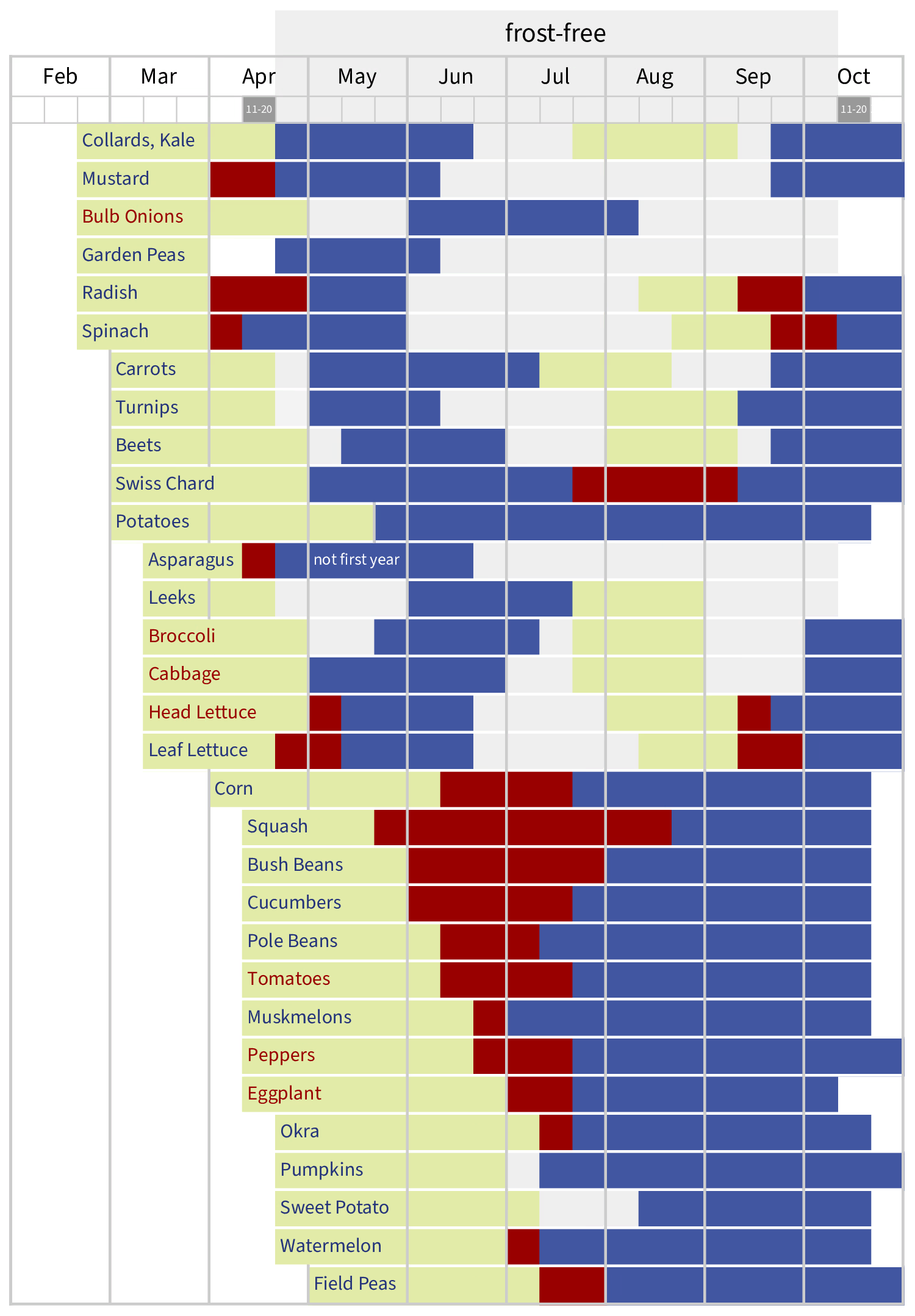2–3 minute read
Vegetables & Herbs
- Supplement rainfall as needed to provide 1 inch of water weekly. The goal is to keep the top 6–8 inches of soil moist. Water early in the morning so that foliage dries. Wet foliage encourages disease.
- Start brussel sprouts and collards for transplanting into the garden in mid-July. Plant beans, lima beans, southern peas, pepper, sweet potato, pumpkin and tomato.
- For most vegetables, harvest early in the morning when water content is highest to ensure the best flavor and texture. For peas and corn, harvest in the afternoon when sugar content is highest, especially if the weather is cool and sunny. See Harvest for details on specific vegetables.
- Prune your herbs: pinch back basil, catmint, and catnip to prevent flowering and keep them bushy, but allow some basil plants to bloom to attract bees. Sow a new crop each month to harvest leaves. When you need a few chives from the garden, cut generously to encourage new growth. Snip the extras into short segment, put them in a plastic container and store in the freezer.
- Be proactive about disease.
- Downy mildew may affect cucurbits such as squashes, melons and cucumbers. A proactive approach is best. You can time treatment more precisely by checking the NCSU Curcubit Downy Mildew Forecast.
- Monitor tomatoes for early blight.
- NCSU Vegetable Disease Fact Sheets
Al Cooke on how to minimize vegetable diseases
- To avoid blossom end rot on tomatoes (also squashes, peppers, etc.), keep soil consistently moist and don’t overfertilize.
- Monitor asparagus for asparagus beetle and squash stems for squash vine borers.
Vegetable Calendar
The chart below uses 10-day intervals based on our Orange County frost dates. We use conservative frost date ranges of April 11–20 and October 11–20, meaning that there is only a ten percent chance of a later spring frost or earlier fall frost. Planting in the middle of a vegetable’s date range is the most reliable choice.
direct sow / transplant
harvest
plant & harvest
frost

Fruits
- Wait a week after blueberries first turn blue before picking. This lets sweetness develop fully. Prune out dieback.
- When blackberry canes reach 30–36 inches tall, cut off the tips to promote side branching.
- Renovate your strawberry bed after the harvest is completed.
Harvest figs when they soften and turn downward. Prune out dead material and consider protecting trees next winter with 1–2 feet of loose mulch such as leaves or straw. Do not fertilize. In our area, fertilization makes figs more susceptible to cold damage.
